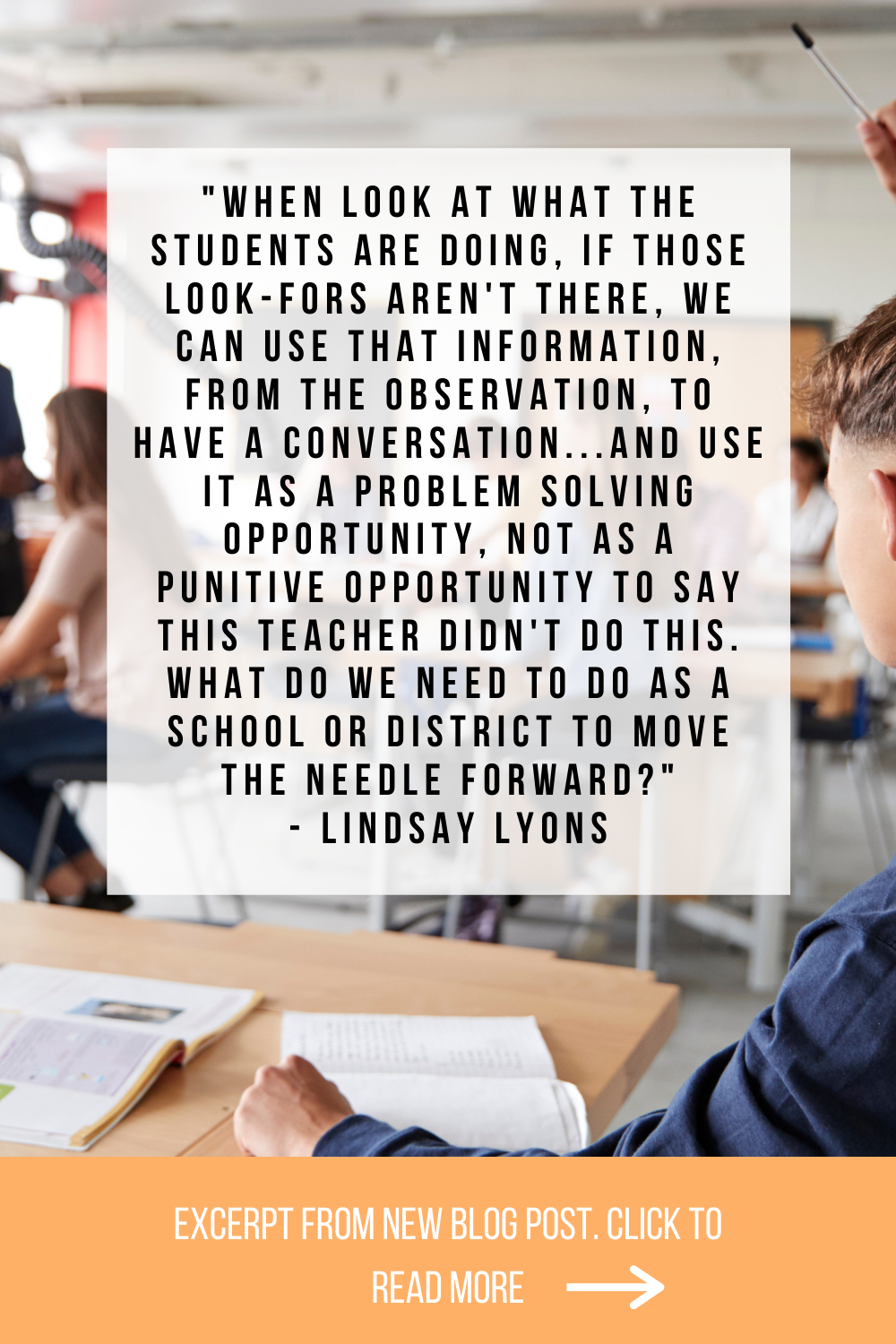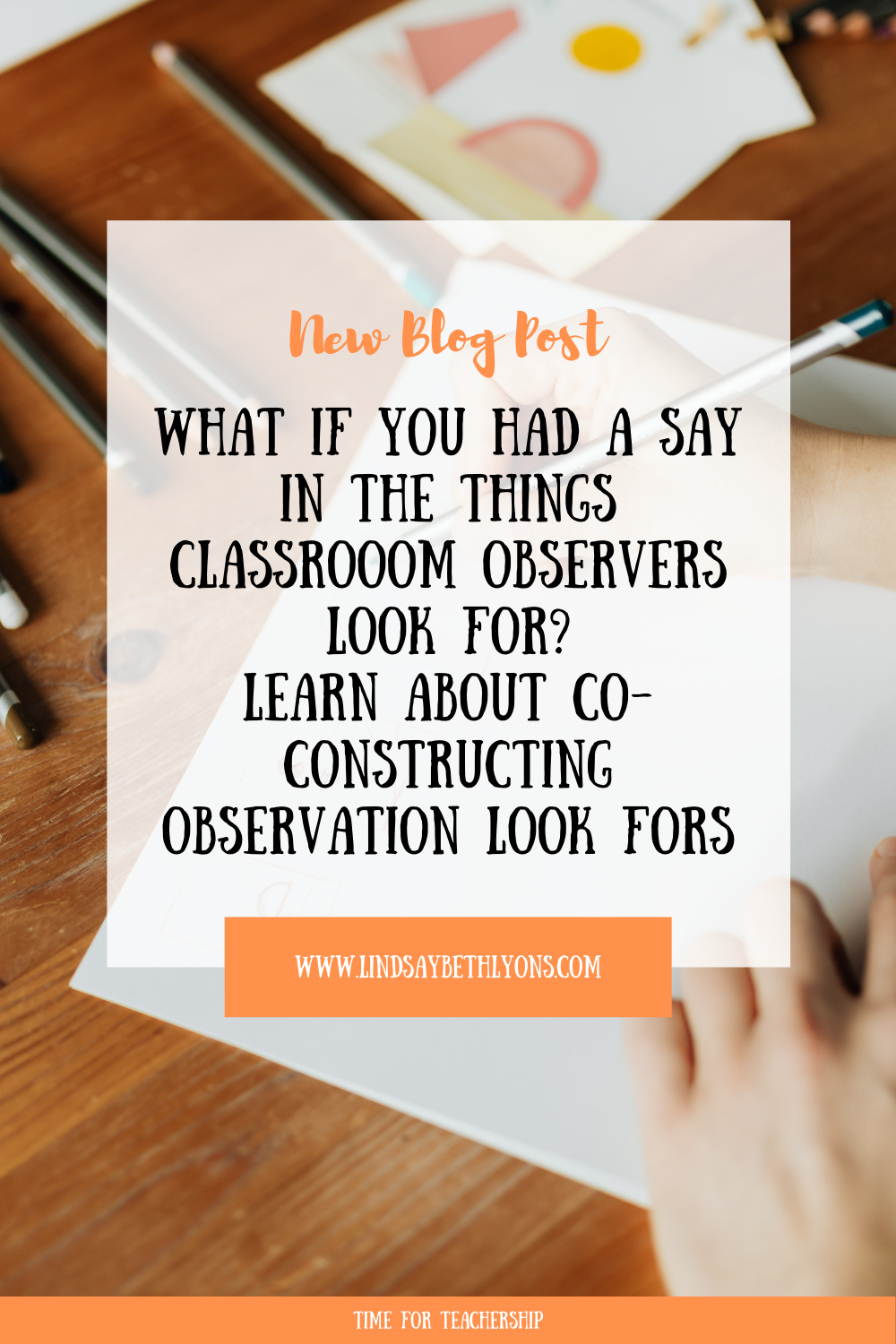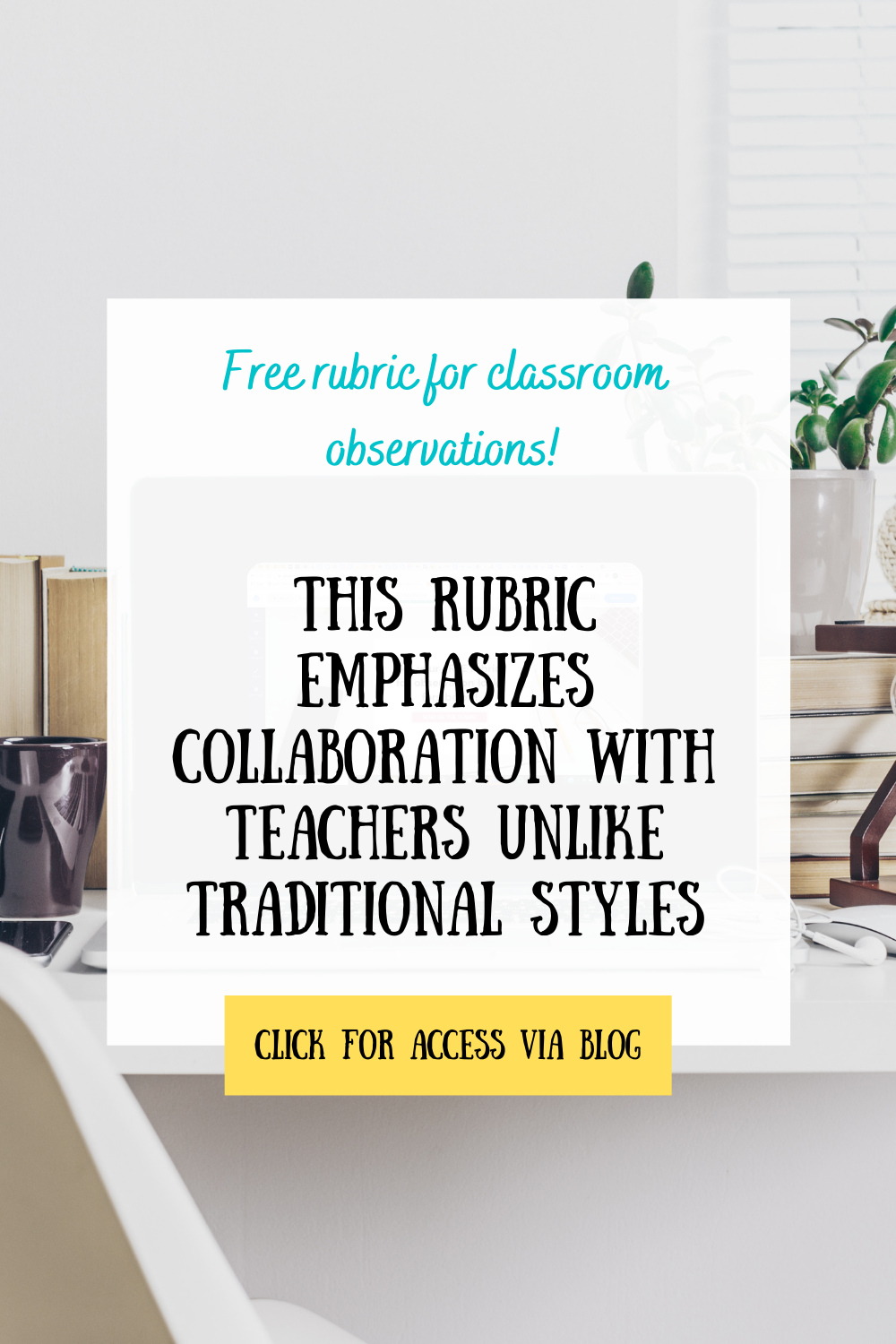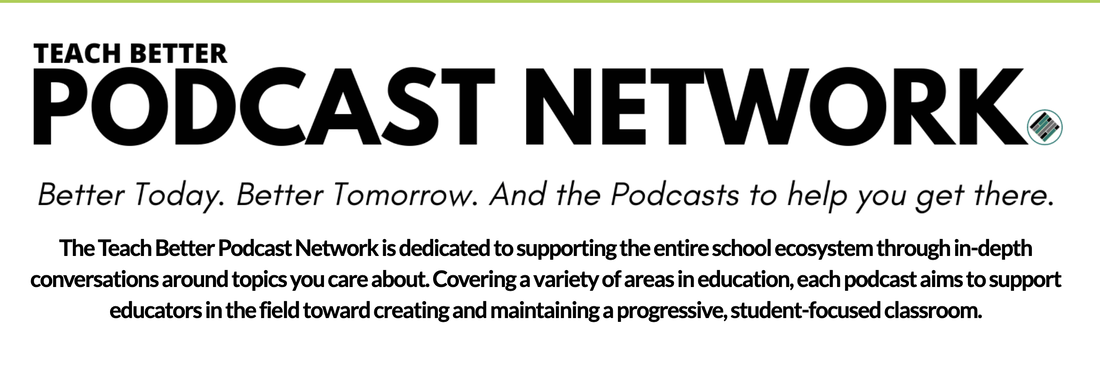|
Listen to the episode using the above player or by clicking the link to your preferred podcast platform below:
In this episode, we are talking about look fors, co-constructing them with teachers, and how you can make them clear for your students. An important part of creating effective professional development is setting clear expectations. Look fors help establish standards for high quality ideas in the classroom and close the gap between learning what to do and actually doing it. A look for is a clear statement that explains an observable teaching or learning behavior, strategy, outcome, product, or procedure. Observers have a list of look fors to watch for when they visit a classroom or examine student work. Teachers can reflect on look fors to compare their teaching practices to current standards, explain what they learn through professional development, and be able to make their own descriptions for practices in their classroom. School and district leaders can use look fors to define standards for all classrooms, identify improvements that could be made, and unify a school around a common goal or practice. But something that breaks away from the traditional style of observation look fors is co-constructing them with teachers. The Danielson rubric is a good example of the traditional look fors for assessing a teacher's performance. The only issue is that it doesn’t get clear on what the look fors are or emphasize collaboration with teachers. “Ideally, we actually want to co-construct these look fors with teachers, so that it's a collaborative effort. We are sharing in the process of determining what a great class looks like, sounds like, feels like, to be a part of.” It is beneficial to give teachers a say in the creation of these look for lists because it makes them feel more personally connected to the process. When they take ownership it is much more motivating than if the observer were to do the planning on their own. In the Danielson rubric, there are four domains. Those are:
Rubric three (instruction) is what we’re going to focus on for right now. In this domain, there are several components. Those components tell observers how well teachers are communicating with students, questioning and discussing techniques, engaging students in learning, using assessment in instruction, and finally, demonstrating flexibility and responsiveness. The language used in the rubric grading from lowest to highest is unsatisfactory, basic, proficient, and distinguished. Frankly, I don’t quite see the point in actually giving attention to those lower three ratings. It’s harmful to teachers and students to set standards that are getting some to strive for proficient or even basic as opposed to everyone aiming for distinguished. The criteria needed to get distinguished in the first component are as follows:
Here’s how I would co-construct those look fors:
Feel free to use these as examples as you co-construct your own look fors. “I think we inspire a lot of people when we just show them what's possible. When we create from research, from this base of well documented Danielson rubric pieces, we can innovate from there; we don't need to stay there, right, we can push toward a more student-centered model of look fors. We can push to co-create with teachers and not just leave this as something that every school is going to adopt when it's potentially not that clear.” For more support on instructional coaching and more PD for teaching and leading, you can subscribe to my Micro Course Library here. To continue the conversation, you can head over to our Time for Teachership Facebook group and join our community of educational visionaries. Until next time leaders, continue to think big, act brave, and be your best self.
0 Comments
Leave a Reply. |
Details
For transcripts of episodes (and the option to search for terms in transcripts), click here!
Time for Teachership is now a proud member of the...AuthorLindsay Lyons (she/her) is an educational justice coach who works with teachers and school leaders to inspire educational innovation for racial and gender justice, design curricula grounded in student voice, and build capacity for shared leadership. Lindsay taught in NYC public schools, holds a PhD in Leadership and Change, and is the founder of the educational blog and podcast, Time for Teachership. Archives
May 2024
Categories |




 RSS Feed
RSS Feed